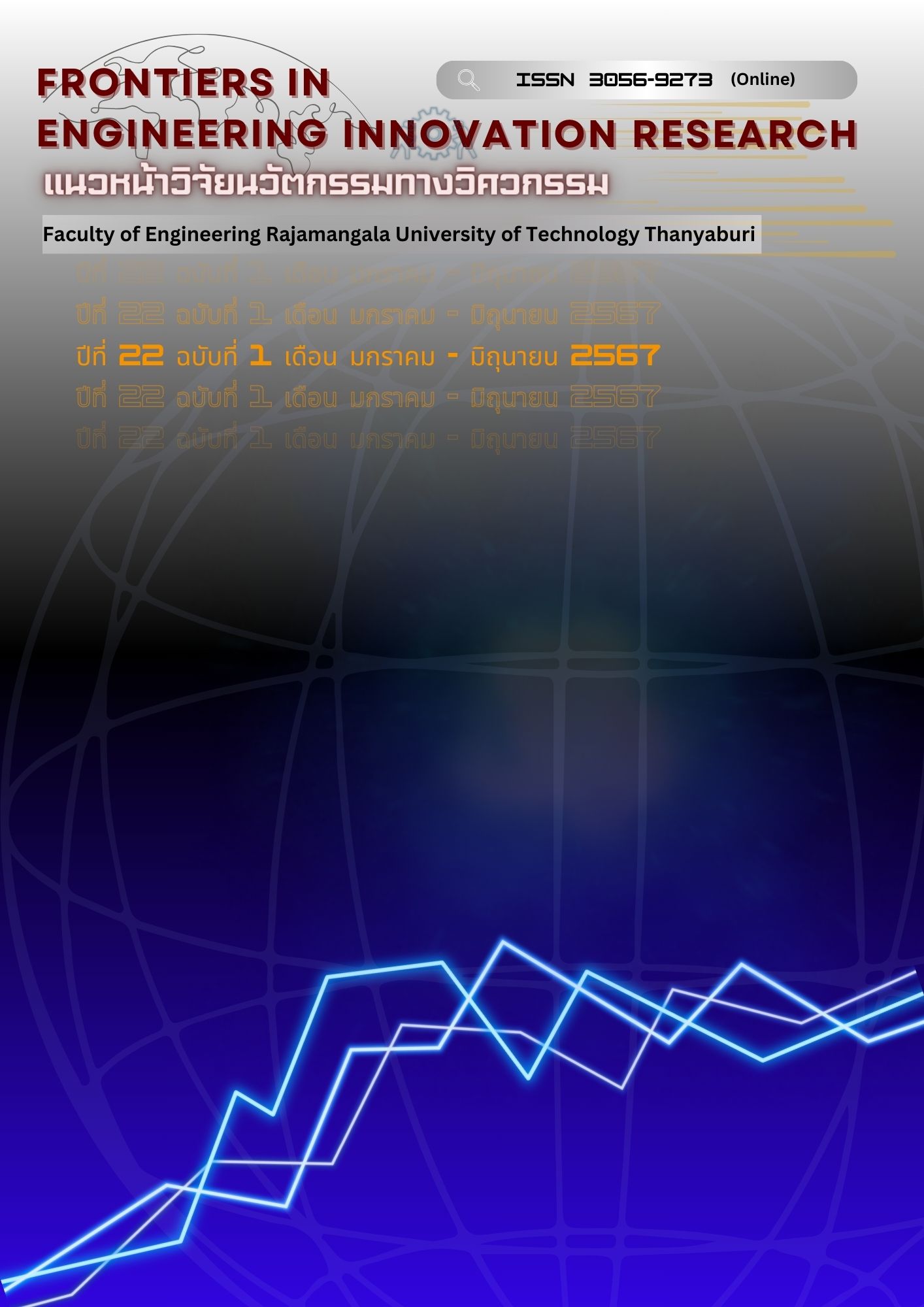The Influence of Aluminum Alloy Effects on Freeform and Geometry after the CNC Milling Process.
Main Article Content
Abstract
This research study Influence of different material of Al5058, Al6061, Al6063, and Al7075 on the freeform and geometry after the CNC milling process. The cutting speed (RPM) and table feed rate (mm/min) are determined equivalent and the cutting tool remains the same, which is a (Carbide Endmill TiAIN-COATED). It is necessary to change the cutting tool for every grade of aluminum. Then, Dimensions have been measured using a Structured Light Scanner (SLS), specifically the GOM ATOS, which is a non-contact type of scanner. Point cloud files from the aluminum 4 grade have been compared with the original CAD. To compare the influence of different materials after the machining process, the size measurements of Al7075 grade aluminum at all 8 locations after machining are kept as close to the original 3D file as possible. The dimensions of spheres 1, 2, and 3 are 20.000 mm, 20.000 mm, and 7.500 mm, respectively. The diameters of spheres 1, 2, and 3 are 47.506 mm, 5.000 mm, and 7.500 mm, respectively. The dimension of cone 1 is 5.017 mm, and the angle 1 measures 20.556 mm.
Article Details

This work is licensed under a Creative Commons Attribution-NonCommercial-NoDerivatives 4.0 International License.
The manuscript, information, content, picture and so forth which were published on Frontiers in engineering innovation research has been a copyright of this journal only. There is not allow anyone or any organize to duplicate all content or some document for unethical publication.
References
Barcelos M.B, De Almeida D.T, Tusset F, Scheuer C.J. Performance analysis of conventional and high-feed turning tools in machining the thermally affected zone after plasma arc cutting of low carbon manganese-alloyed steel. Journal of Manufacturing Processes. 2024;115:18-39
Paisan T, Siricai T, Phanphong K, Prajak A. The influence of cutting tool geometry in a dry turning operation of carbon steel (S50C) in automotive parts production. Journal of Engineering, RMUTT. 2019;17(2):163-71. (in-Thai)
Quinsat Y, Dubreuil L, lartigue C. A novel approach for in-situ detection of machining defects. The International Journal of Advanced Manufacturing. 2017;90:1625-38.
Kiraci E, Franciosa P, Turley G.A, Olifent A, Attridge A, Williams M. Moving towards In-lineMetrology: evaluation of a laser radar System for In-line dimensional inspectionfor automotive assembly systems. The International Journal of Advanced Manufacturing. 2017;91: 69–78.
Savio E, De Chiffre L, Schmitt R. Metrology of freeform shaped parts CIRP Annals-Manufacturing Technology. 2007;56(2):810–30.
Guerraa M.G, Lavecchiaa F, Maggipintob G, Galantucci L.M. Measuring techniquessuitable for verification and repairing of industrial components: A CIRP Journal of Manufacturing Science and Technology. 2019;27:114–23.
Susana M, Eduardo C, Sara G, Joaquín B. New procedure for qualification of structured light 3d scanners using an optical Feature- based gauge. Optics and Lasers in Engineering. 2018;110:193–206
Minetola P, Iuliano L, Calignano F. A customer oriented methodology for reverse engineering software selection in the computer aided inspection scenario. Computers in Industry. 2015;67:54–71.
Li F, Stoddart D, Zwierzaka I. A performance test for a fringe projection scanner in various ambient light conditions. In: Procedia CIRP. 10th CIRP Conference on Intelligent Computation in Manufacturing Engineering. 2017;62:400-4.
Gapinskia B, Wieczorowskia M, Marciniak-Podsadna L, Dybala B, Ziolkowskib G. Comparison of different method of measurement geometry using CMM, optical scanner and computed tomography 3D. International Symposium on Intelligent Manufacturing and Automation. Procedia Engineering. 2014;69:255-62.
Ramos Barbero B, Santos Ureta E. Comparative study of different digitization techniques and their accuracy. Computer-Aided Design. 2011;43:188-206.
Paulic M, et al. Reverse engineering of parts with optical scanning and additive manufacturing. International Symposium on Intelligent Manufacturing and Automation. Procedia Engineering. 2014;69: 795–803.
Tóth T, Živčák J. A comparison of the outputs of 3D scanners. International Symposium on Intelligent Manufacturing and Automation. Science Direct Procedia Engineering. 2014;69:393-401.
Chen F, Brown G.M, Song M. Overview of three-dimensional shape measurement using optical methods. Optical Engineering. 2000;39: 10-22.
Intwala A.M, Magikar A. A review on process of 3D model reconstruction. International Conference on Electrical, Electronics, and Optimization Techniques (ICEEOT) and Electronic Technologies. 2016;2851-5.
Geng Z, Bidanda B. Review of reverse engineering systems–current state of the art. Virtual and Physical Prototyping. 2017;12:161-72.
EN ISO 14253-3:2011. Geometrical product specifications (GPS)-inspection by measurement of workpieces and measuring equipment–part 3: guidelines for achieving agreements on measurement uncertainty state-ments. 2011.
Guan-fei XIAO, Ju-fu JIANG, Ying WANG, Ying-ze LIU, Ying ZHANG, Bao-yong GUO, Zhen HE, Xi-rui XIAN. Microstructure and mechanical properties of 7075 aluminum alloy part formed by semi-solid thixoextrusion. Trans. Nonferrous Met. Soc. China 2023;33:3235-49.


